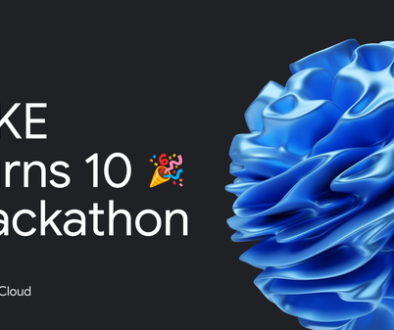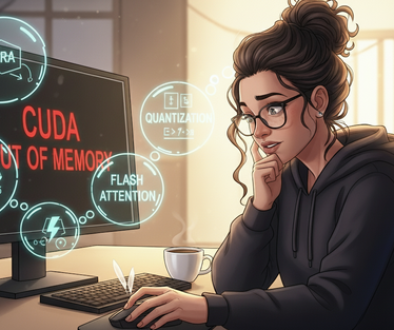GCP – mixi accelerates AI adoption with help from Google Cloud Advanced Solutions Lab
Artificial intelligence (AI) and machine learning (ML) have been helping businesses become more efficient for years now, and their applications are growing seemingly by the day. Given this fast evolution, it’s understandable that many organizations aren’t quite sure how to best use AI and ML to help their business.
This was the case at mixi, a company that offers digital entertainment and lifestyle services in Japan, including the “mixi” social networking platform and the mobile game “Monster Strike.” Around 2018, the mixi team became acutely aware of AI’s role in shaping the future, and decided to take action to learn more about the technology and its potential to help their business. A big part of that was attending an immersive AI and ML training at Google Cloud’s Advanced Solutions Lab (ASL), which aims to help customers make better use of AI and ML technologies through virtual or onsite education.
For this post, we spoke with five mixi engineers—Rio Watanabe, Tanpopo Group CTO, XFLAG Development Division; Hidetaka Kojo, Tanpopo Group CTO, XFLAG Development Division; Harumitsu Shinda, Development Group Manager, Romi Division; Hiroki Kurasawa, Data Marketing Group, Digital Marketing, Marketing Division; and Ryutaro Osafune, Technical Art Group, Design Strategy, XFLAG Design Division—who joined this training at the Google campus in Shibuya, Tokyo, to find out more about the program, what they learned, and how they’re putting that knowledge into action.
Making AI the obvious choice for problem solving
Kojo and Watanabe work as part of the Tanpopo group handling technological development for the company’s XFLAG entertainment brand. The group’s name, which means “dandelion,” comes from the Japanese culinary tradition of placing dandelion decorations on sashimi. It was chosen as a symbol of AI’s potential to free engineers from simple tasks, just like placing dandelions on a sashimi production line.
“I don’t personally work in the AI department, but my work touches on several projects, so I still see the technical side,” Kojo explains. “At mixi, we want to make AI the obvious choice for problem solving, and have been using it as a live tool since around 2018.”
“For example, we used it to get the balance right when adding new cards to the card-fighting game ‘Fight League,’” Watanabe continues. “We created an AI player that behaves similarly to a real player to ensure that the cards’ abilities are appropriate before release (so that we don’t break the game’s balance).”
Outside XFLAG’s operations, the company’s technical art group also uses ML to help improve task efficiency and quality for artists working on game character art. A system called Generative Adversarial Networks (GAN) uses AI in image creation, and research and development is underway to create new characters for Monster Strike more efficiently.
“Essentially, the challenge is for it (GAN) to learn from thousands of existing character graphics (2D images) and create a brand-new character design ‘draft’ in the style of Monster Strike,” Osafune explains. “It should work as a creative AI to support the design work of our artists.”
Mixi’s use of AI is not limited to games, however. Company President Kenji Kasahara and CTO Tatsuma Murase have big ideas and are trying out AI in multiple projects at once.
In the marketing division, for example, ML predicts and adapts to user behavior.
“For example, in ‘Monster Strike,’ we can use AI to identify users who might be tempted to leave based on their in-game logs and subsequently target them with online ads. AI can help us analyze usage trends and encourage players to participate in our bespoke multiplayer system, too,” Kurasawa says. “We launched these initiatives two years ago and have already seen some great results. We use AI in other areas, too, including building a recommendation system that presents content that the individual user will like.”
Meanwhile, the Romi division, which is part of Vantage Studio and handles lifestyle operations, is developing a conversational robot that uses AI.
“A major focus of this project is the issue of understanding the user’s speech and deciding how to respond,” Shinda says. “The technology to naturally process Japanese speech and use it in conversation doesn’t really exist yet, so we are developing and training a model for this purpose using TensorFlow. The process of converting user speech to text was different in that there are already several excellent technologies available. So we could adopt the highest precision Speech-to-Text API.”
Gaining practical knowledge and technologies from experts at the forefront of AI
In the summer of 2019, after noticing a positive return on investment, mixi decided to take its AI adoption one step further, and signed up for Google Cloud’s Advanced Solutions Lab (ASL).
The ASL enables businesses to collaborate with Google Cloud and apply ML to solve high-impact business challenges. It lets technical teams learn from Google’s ML experts through an immersive experience. Delivered both virtually and at dedicated facilities around the globe, it helps technical teams develop competency in building end-to-end, productionized ML solutions to solve specific business challenges.
Kojo and other senior staff participated in the ASL program, giving them the opportunity to learn all about AI and ML over four weeks in November and December. Here are their five tips for getting the most out of the ASL experience:
1. Ask questions
“Honestly, I think you could absorb the knowledge and techniques by reading up, but of course there is something special about being taught by someone who actually does it for real,” Kojo says. “I asked lots of questions during the program, and many of the answers came down to intuition based on real experience, which I greatly appreciated.”
2. Look for “insider” tips
“In machine learning papers you mostly find one way of achieving a result, but they often lack details of the process. My motivation for taking part in ASL was to benefit from somebody who works on it and to learn insider tips related to the craft,” Shinda explains. “The lectures conveyed specific techniques, such as creating as large a learning model as the GPU will allow initially, to give room to increase the dropout rate later.”
3. Use the experience to pass knowledge on to colleagues
“Before taking part in ASL, I had studied what I needed and when I needed it, so it was great to learn about AI technologies in a more systematic way,” Watanabe says. “For example, the technique of visualizing a neural network using the ‘Neural Network Playground’ tool was new to me. That experience will prove useful as I pass on the knowledge I gained to my colleagues.”
4. Discover new (to you) technology
“My team had previously used a TensorFlow low-level API, but at the ASL I learned about the high-level Estimator API and how it’s already being used, which was all new to me,” Kurasawa explains. “It was also great to find out how to efficiently link Google Cloud services as part of a task in which we formed a complete machine learning sequence.”
5. Ask questions (again)
“We’re using GAN for our research and development, as I mentioned earlier, but because we had been mainly doing this through self-study, some basic elements were missing when we put our knowledge into practice,” Osafune says. “Knowing that the lecturer was a GAN expert, I was quite persistent in asking questions about it. [He laughs.] In the end, we basically got a full tech talk on GAN added to the curriculum. I appreciated having that kind of flexibility in the program.”
The team has already used some of the knowledge gained from ASL in some of their products and services, and they’re planning to pass on what they’ve learned to new graduates and existing engineers.
“I’d like to see an awareness of AI and ML not just in our engineers, but in roles such as planning, too,” Kojo concludes. “At the risk of repeating myself, we really want to make AI the obvious choice for solutions at mixi.”
Click hereto learn more about the Advanced Solutions Lab, which now includes the ASL Virtual offering. For more about Google Cloud AI solutions, join us September 1 forNext OnAir. To get your team started on their AI training and certification journey, join a live Cloud Study Jam on September 2.
Read More for the details.




